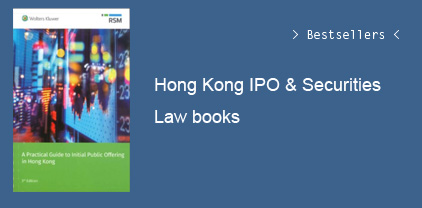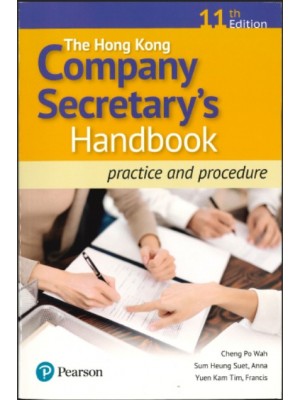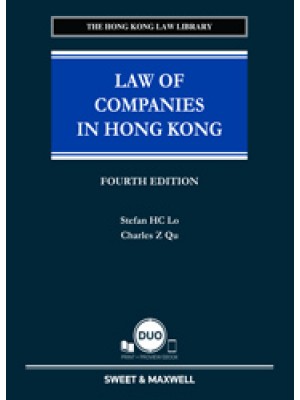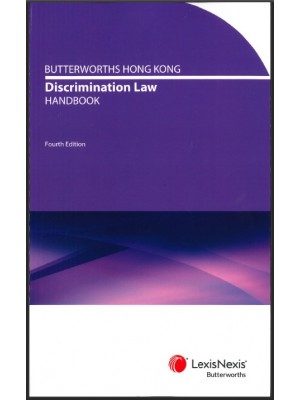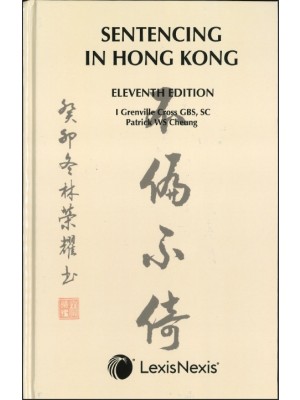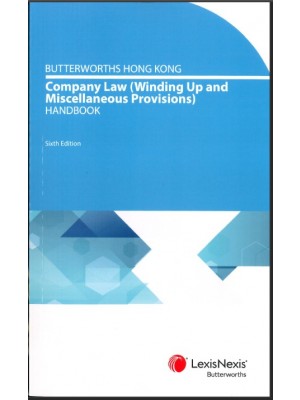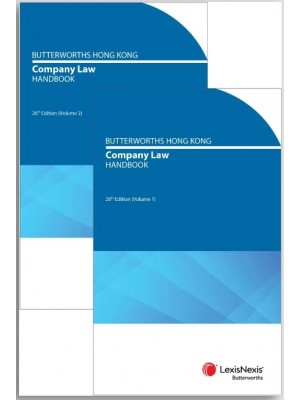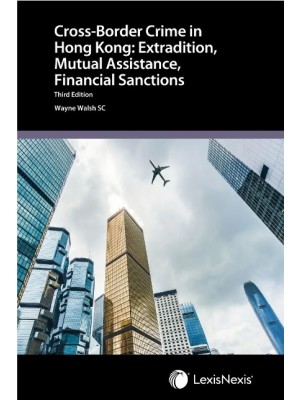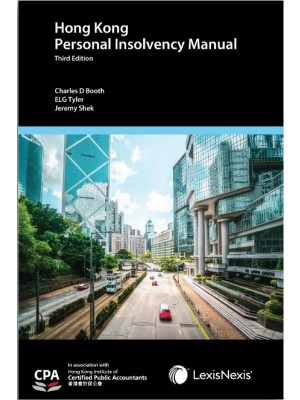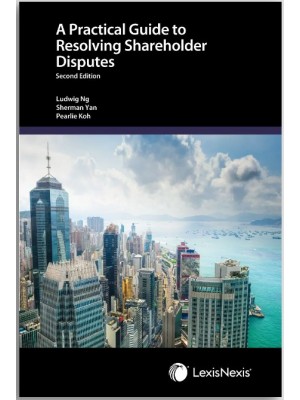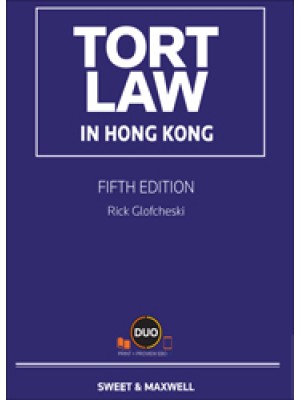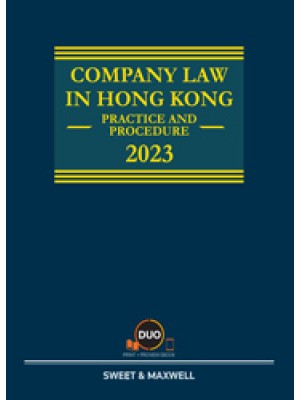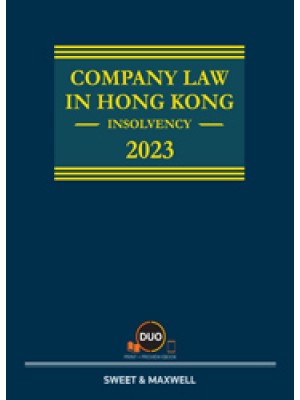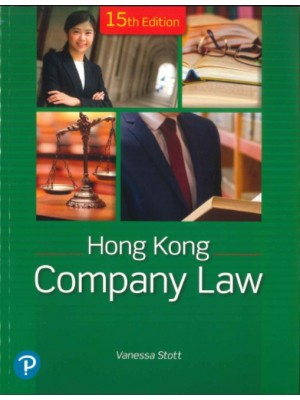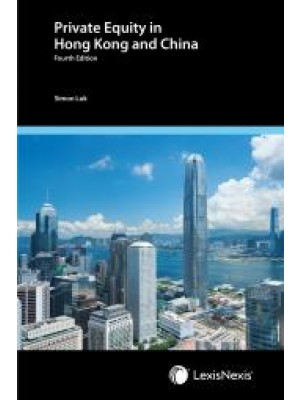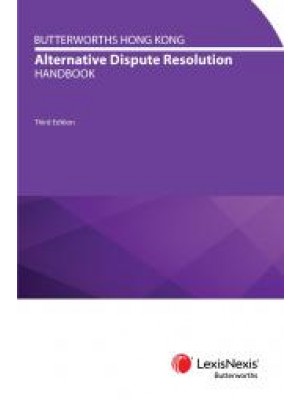VOLUME 1
Chapter 1. INTRODUCTION TO THE BOARD AND ITS PROCEEDINGS
- 1.01 Overview of the Board and Its Cases
- 1.02 The Functions of Trademarks
- 1.03 Parallels Between Policies Underlying Trademark Law and Patent Law
- 1.04 The Benefits of Federal Trademark Registration
- 1.05 Authorities That Apply in Board Proceedings
- 1.06 Case Law Governing Board Proceedings
- 1.07 Trademark Manuals 1.08 Summary of Contents
Chapter 2. OPPOSITION PROCEEDINGS—AN OVERVIEW
- 2.01 In General
- 2.02 The Governing Rules in an Opposition Proceeding
- 2.03 Sequence of Events in an Opposition Proceeding
- 2.04 Papers Required to Be Served in an Opposition Proceeding
- 2.05 Who May File an Opposition
- 2.06 Joining Persons in an Opposition
- 2.07 Time for Filing Opposition
- 2.08 Request for Extension of Time to File Opposition
- 2.09 Filing an Opposition
- 2.10 Service of Opposition
- 2.11 Fees for an Opposition
- 2.12 Contents of Opposition
- 2.13 Notification to Parties of Opposition Proceeding
- 2.14 Standing
- 2.15 Burden of Proof
- 2.16 Hypothetical Pleading
- 2.17 Answer to Opposition
- 2.18 Counterclaim in Opposition
- 2.19 Amendment of Pleadings in an Opposition Proceeding
- 2.20 Oppositions Involving Conflicting Applications
- 2.21 Dividing Out Unopposed Classes in a Multiple-Class Application
- 2.22 Remand of Application After Decision
- 2.23 Failure by Opposer to File Section 8 Affidavit or Renewal Application for Pleaded Registration
- 2.24 Applications for Registration on the Supplemental Register Cannot Be Opposed
Chapter 3. CANCELLATION PROCEEDINGS—AN OVERVIEW
- 3.01 In General
- 3.02 The Governing Rules in a Cancellation Proceeding
- 3.03 Sequence of Events in a Cancellation Proceeding
- 3.04 Papers Required to Be Served in a Cancellation Proceeding
- 3.05 Who May File a Cancellation Petition
- 3.06 Petitioning to Cancel More than One Registration
- 3.07 Time for Filing Petition for Cancellation
- 3.08 Filing a Petition for Cancellation
- 3.09 Service of Cancellation Petition
- 3.10 Fees for a Petition for Cancellation
- 3.11 Contents of Cancellation Petition
- 3.12 Notification to Parties of Cancellation Proceeding
- 3.13 Notice Where Address of Registrant Is Unknown
- 3.14 Standing
- 3.15 Burden of Proof
- 3.16 Hypothetical Pleading
- 3.17 Answer to Petition for Cancellation
- 3.18 Counterclaim in Cancellation Proceeding
- 3.19 Amendment of Pleadings in a Cancellation Proceeding
- 3.20 Failure to File Section 8 Affidavit or Renewal Application for Challenged Registration
- 3.21 Cancellation of Registrations on the Supplemental Register
Chapter 4. SETTLEMENT METHODS
- 4.01 Advantages Offered by Settlement
- 4.02 Time Extensions and Suspensions During Settlement Negotiations
- 4.03 Methods for Structuring Settlements
- 4.04 Amendment of Goods or Services
- 4.05 Amendment of Mark
- 4.06 Voluntary Abandonment of Application
- 4.07 Voluntary Surrender or Cancellation of Registration
- 4.08 Withdrawal of Opposition
- 4.09 Withdrawal of Cancellation Petition
- 4.10 Consent Agreement
- 4.11 Assignment and Licensing Arrangements
- 4.12 Settlement Based on Entry of Disclaimer
Chapter 5. FILING AND SERVICE OF PAPERS
- 5.01 Overview
- 5.02 U.S. Patent and Trademark Office Web Site
- 5.03 General Filing Requirements
- 5.04 Form of Submissions
- 5.05 Methods for Filing Papers with the Board
- 5.06 Use of Acknowledgment Postcard
- 5.07 The Five Day Rule
- 5.08 The Saturday, Sunday or Holiday Rule
- 5.09 Calculating Extensions when Due Date Falls on a Saturday, Sunday or Federal Holiday
- 5.10 Requirements Governing Service of Papers and Correspondence with Patent and Trademark Office
- 5.11 Requirements Governing Signing of Papers
- 5.12 Business Must Be Transacted in Writing
- 5.13 Business Must Be Conducted with Decorum and Courtesy
- 5.14 Requirements for Correspondence with Patent and Trademark Office
Chapter 6. GROUNDS FOR OPPOSITION AND CANCELLATION—LIKELIHOOD OF CONFUSION
- 6.01 The Elements of a Likelihood of Confusion Claim
- 6.02 The Test for Likelihood of Confusion: The DuPont Factors
- 6.03 Weight Given to Each DuPont Factor
- 6.04 Whether Likelihood of Confusion Exists Is a Question of Law Based on the Underlying Facts
- 6.05 Factor 1: The Similarity or Dissimilarity of the Marks in Their Entireties as to Appearance, Sound, Connotation and Commercial Impression
- 6.06 Factor 2: The Similarity or Dissimilarity and Nature of the Goods or Services as Described in an Application or Registration or in Connection with Which a Prior Mark Is in Use
- 6.07 Factor 3: The Similarity or Dissimilarity of Established, Likely-to-Continue Trade Channels
- 6.08 Factor 4: The Conditions Under Which and the Buyers to Whom Sales Are Made, i.e. “Impulse Purchasing” Versus Careful, Sophisticated Purchasing
- 6.09 Factor 5: The Fame of the Prior Mark (Sales, Advertising, Length of Use)
- 6.10 Factor 6: The Number and Nature of Similar Marks in Use on Similar Goods
- 6.11 Factor 7: The Nature and Extent of Any Actual Confusion
- 6.12 Factor 8: The Length of Time During, and Conditions Under Which, There Has Been Concurrent Use Without Evidence of Actual Confusion
- 6.13 Factor 9: The Variety of Goods on Which a Mark Is or Is Not Used (House Mark, “Family” Mark, Product Mark)
- 6.14 Factor 10: The Market Interface Between Applicant and the Owner of a Prior Mark
- 6.15 Factor 11: The Extent to Which Applicant Has a Right to Exclude Others From Use of Its Mark on Its Goods
- 6.16 Factor 12: The Extent of Potential Confusion, i.e., Whether De Minimis or Substantial
- 6.17 Factor 13: Any Other Established Fact Probative of the Effect of Use
- 6.18 The Issue of Intent and Good Faith
- 6.19 Theoretical Possibility of Confusion Not Enough
- 6.20 Effect of Prior Inconsistent Positions on Likelihood of Confusion Determination
- 6.21 Reverse Confusion
- 6.22 Time Limit for Asserting Likelihood of Confusion Claim
- 6.23 The Proprietary Rights Requirement for a Likelihood of Confusion Claim
- 6.24 Section 2(d) Claim Based on Registered Mark
- 6.25 Section 2(d) Claim Based on Common Law Mark
- 6.26 Section 2(d) Claim Based on Trade Name
- 6.27 Asserting Claims of Likelihood of Confusion and Descriptiveness in the Alternative
Chapter 7. GROUNDS FOR OPPOSITION AND CANCELLATION—FUNCTIONALITY
- 7.01 Overview of Functionality Doctrine
- 7.02 Summary of Legal Framework for Analyzing Functionality and Trade Dress Protection
- 7.03 Policies Underlying the Functionality Doctrine
- 7.04 Lanham Act Provisions Relating to Functionality
- 7.05 In Determining Functionality, the Mark Must Be Viewed as a Whole
- 7.06 Functionality Is a Question of Fact
- 7.07 Secondary Meaning Cannot Overcome Functionality Rejection
- 7.08 De Jure Versus De Facto Functionality
- 7.09 Factors Used to Determine Functionality
- 7.10 Factor No. 1: The Existence of a Utility Patent
- 7.11 Factor No. 2: Advertising Touting the Design's Utilitarian Advantages
- 7.12 Factor No. 3: The Availability of Alternative Designs
- 7.13 Factor No. 4: Does the Design Offer a Comparatively Simple or Cheap Method of Manufacturing?
- 7.14 Is Color Functional?
- 7.15 Is Scent Functional?
- 7.16 Is Taste Functional?
- 7.17 Is Sound Functional?
- 7.18 Aesthetic Functionality
- 7.19 Relationship Between Functionality and Design Patent Law
Chapter 8. GROUNDS OTHER THAN LIKELIHOOD OF CONFUSION AND FUNCTIONALITY
- 8.01 Time Limit for Asserting Certain Grounds
- 8.02 Availability of Secondary Meaning to Overcome Certain Grounds
- 8.03 Immoral or Scandalous Matter
- 8.04 Deceptive Matter
- 8.05 False Suggestion of a Connection
- 8.06 Matter Which May Disparage
- 8.07 Flag, Coat of Arms, or Other Insignia 2(b)
- 8.08 Name, Portrait, or Signature of Individual 2(c)
- 8.09 Merely Descriptive
- 8.10 Deceptively Misdescriptive
- 8.11 Genericness
- 8.12 Refusals to Register Based on Geographic Significance
- 8.13 Primarily Geographically Descriptive
- 8.14 Primarily Geographically Deceptively Misdescriptive
- 8.15 Geographically Deceptive
- 8.16 Geographical Indications Used for Wines and Spirits
- 8.17 Primarily Merely a Surname
- 8.18 Application Not Filed By Owner of Mark
- 8.19 Mark Not Yet in Use at Time Application Was Filed
- 8.20 Fraud
- 8.21 Misuse of Registration Symbol
- 8.22 Failure to Disclaim Unregistrable Matter
- 8.23 Lack of Bona Fide Intent to Use
- 8.24 Abandonment
- 8.25 Abandonment Based on Nonuse
- 8.26 Abandonment Based on Material Alteration of Mark
- 8.27 Abandonment Based on Uncontrolled or “Naked” Licensing
- 8.28 Abandonment Based on Failure to Police
- 8.29 Abandonment Based on Naked Assignment
- 8.30 Invalid Assignment of Intent-to-Use Application
- 8.31 Claim Preclusion and Issue Preclusion
- 8.32 Equitable Estoppel Based on Withdrawal of Prior Application with Prejudice
- 8.33 Contracting Away Right to Register
- 8.34 Dilution
Chapter 9. SECONDARY MEANING
- 9.01 Overview of Secondary Meaning
- 9.02 Anonymous Source Rule
- 9.03 Situations in Which Issue of Secondary Meaning Arises
- 9.04 Secondary Meaning Is a Question of Fact
- 9.05 Burden of Proof on Secondary-Meaning Issue
- 9.06 The More Descriptive or Commonplace the Claimed Mark Is, The Heavier the Burden to Prove Secondary Meaning
- 9.07 Secondary Meaning Is Not Required for Word Marks That Are Inherently Distinctive
- 9.08 Arguing Secondary Meaning “In the Alternative”
- 9.09 Grounds That Secondary Meaning Cannot Overcome
- 9.10 Grounds That Secondary Meaning Can Overcome
- 9.11 De Facto Secondary Meaning
- 9.12 In Determining Secondary Meaning, Facts Arising After Filing Date of Application Can Be Considered
- 9.13 Legal Authorities Governing Secondary-Meaning Determination
- 9.14 Secondary-Meaning Evidence Can Be Direct or Circumstantial
- 9.15 Legal Principles Used in Assessing Secondary-Meaning Evidence
- 9.16 Five Years of “Substantially Exclusive and Continuous Use”
- 9.17 Fraud Claims Relating to Allegation of “Substantially Exclusive” Use
- 9.18 Ownership of Prior Registration
- 9.19 Use of Term in Prominent Trademark Manner Strengthens Showing of Secondary Meaning
- 9.20 Use of Designation as Part of Trade Identity Can Strengthen Showing of Secondary Meaning
- 9.21 Third-Party Use Militates Against Secondary Meaning
- 9.22 Use as a Style or Flavor Designation Militates Against a Finding of Secondary Meaning
- 9.23 Enforcement Efforts Do Not Necessarily Establish Secondary Meaning
- 9.24 Product Success Does Not Necessarily Equate with Secondary Meaning
- 9.25 Evidence of Copying Does Not Necessarily Establish Secondary Meaning
- 9.26 Affidavits or Declarations From Consumers and Others
- 9.27 Consumer Surveys Regarding Secondary Meaning of Word Marks
- 9.28 Secondary Meaning and Intent-to-Use Applications
- 9.29 Claiming Secondary Meaning for a Portion of a Mark
Chapter 10. TRADE DRESS
- 10.01 Overview of Trade Dress
- 10.02 Legal Framework for Analyzing Protection and Distinctiveness of Trade Dress
- 10.03 Product-Design Trade Dress
- 10.04 Product-Packaging Trade Dress
- 10.05 Determining Whether Product-Packaging Trade Dress Is Inherently Distinctive
- 10.06 Trade Dress Found Not to Be Inherently Distinctive—Examples
- 10.07 Trade Dress Found to Be Inherently Distinctive—Examples
- 10.08 “Uniqueness” Does Not Necessarily Equate with Inherent Distinctiveness
- 10.09 The Abercrombie and Seabrook Tests Are Complementary
- 10.10 The Seabrook Test Remains Valid After Wal-Mart v. Samara
- 10.11 Determining Whether Trade Dress Has Acquired Secondary Meaning
- 10.12 The More Commonplace the Design, the More Difficult It Is to Prove Secondary Meaning
- 10.13 Summary of Legal Principles Relating to Secondary Meaning and Trade Dress
- 10.14 Advertising That Calls Attention to the Design Supports Secondary Meaning
- 10.15 Secondary Meaning Is Difficult to Establish for a Product Configuration
- 10.16 Market Success of a Design, Standing Alone, Generally Is Not Sufficient to Establish Secondary Meaning
- 10.17 Showing Picture of Product, Without More, Generally Is Not Sufficient to Establish Secondary Meaning
- 10.18 Advertising Utilitarian Advantages of Product Can Undermine Secondary Meaning
- 10.19 Use of Similar Designs By Others Weighs Against Secondary Meaning
- 10.20 Evidence Showing That the Design Was Copied Does Not Necessarily Establish Secondary Meaning
- 10.21 Trademark Enforcement Efforts Involving the Design Do Not Necessarily Support a Finding of Secondary Meaning
- 10.22 Affidavits and Declarations From Consumers Must Focus on the Claimed Design Features
- 10.23 Consumer Surveys Regarding Secondary Meaning of Trade Dress
- 10.24 Should Secondary Meaning Developed During the Life of a Patent Be Given Legal Effect After the Patent Expires?
Chapter 11. DEFENSES IN OPPOSITION AND CANCELLATION PROCEEDINGS
- 11.01 Overview
- 11.02 Pleading Affirmative Defenses
- 11.03 Laches
- 11.04 Acquiescence
- 11.05 The “Prior Registration” Defense (The Morehouse Defense)
- 11.06 Unclean Hands
- 11.07 Equitable Estoppel
- 11.08 Contractual Estoppel
- 11.09 Judicial Estoppel
- 11.10 Res Judicata or Claim Preclusion
- 11.11 Collateral Estoppel or Issue Preclusion
- 11.12 Preclusion Arising Out of Prior Judgment in Ex Parte Proceeding
- 11.13 Licensee Estoppel
- 11.14 Abandonment as a Defense
- 11.15 Fraud as a Defense
- 11.16 Genericness as a Defense
- 11.17 Functionality as a Defense
- 11.18 Absence of Likelihood of Confusion as a Defense
- 11.19 Priority as a Defense
- 11.20 Lack of Secondary Meaning as a Defense
- 11.21 Acquisition of Secondary Meaning as a Defense
- 11.22 Challenge Against Validity of Plaintiff's Registration
Chapter 11A. DISCLOSURE PRACTICE
- 11A.01 History of Disclosure System
- 11A.02 Overview of Disclosure System
- 11A.03 Parties Can Modify Disclosure Obligations by Agreement
- 11A.04 Case Schedule Under Disclosure System
- 11A.05 Interplay Between Disclosures and Traditional Discovery
- 11A.06 Discovery Conference
- 11A.07 Initial Disclosures
- 11A.08 Expert Witness Disclosures
- 11A.09 Pretrial Disclosures
- 11A.10 Disclosures and Confidential Information
- 11A.11 Supplementation of Disclosures
- 11A.12 Use of Written Disclosures and Disclosed Documents as Evidence
Chapter 12. DISCOVERY
- 12.01 Overview of Discovery
- 12.02 Discovery Conference
- 12.03 Time Requirements Governing Discovery
- 12.04 Serving Discovery
- 12.05 Responding to Discovery
- 12.06 Effect of Failing to Properly Respond to Discovery
- 12.07 Scope of Discovery
- 12.08 Specific Rulings on Discovery Disputes
- 12.09 Methods of Discovery
- 12.10 Discovery of Confidential Information
- 12.11 Objections Made at Discovery Depositions
- 12.12 Supplementation of Discovery Responses
- 12.13 Motions Relating to Discovery
- 12.14 Motion to Extend Time for Responding to Discovery
- 12.15 Motion to Extend the Discovery Period
- 12.16 Motion to Reopen Discovery
- 12.17 Motion to Compel Discovery
- 12.18 Motion to Determine Sufficiency of Answer or Objection to Requests for Admission
- 12.19 Motion to Withdraw or Amend Admission
- 12.20 Motion for Leave to Serve Interrogatories That Exceed the Numerical Limit
- 12.21 Motion to Take Oral Deposition Abroad
- 12.22 Motion for Sanctions Relating to Discovery Matters
- 12.23 Motions Challenging Discovery Requests Are Generally Inappropriate
- 12.24 Motion for Protective Order
- 12.25 Telephone Conferencing with Board Attorney on Discovery Matters
Chapter 13. PRIORITY DETERMINATIONS
- 13.01 Overview
- 13.02 A Party Must Establish Priority Over Its Opponent, Not the Whole World
- 13.03 Priority Based Upon Filing Date of Application—Constructive Use Priority
- 13.04 Priority Based Upon Pleaded Registration—The King Candy Rule
- 13.05 Priority Based Upon Common-Law Use Before Filing Date of Application
- 13.06 Party Seeking to Prove Priority Date Earlier than That Set Forth in Its Application or Registration Faces Heavier Burden
- 13.07 Priority and Common Law Rights in Separate Geographical Areas
- 13.08 Priority and Abandonment
- 13.09 Priority and Secondary Meaning
- 13.10 Priority and the Doctrine of Natural Expansion—The Problem of Intervening Rights
- 13.11 Priority Based on Use By Related Company or Predecessor-in-Interest
- 13.12 Priority Based Upon Tacking
- 13.13 A Defendant Cannot Rely Upon Use of a Family of Marks in Proving Priority
- 13.14 Priority Based Upon Use-Analogous-to-Trademark Use
- 13.15 Priority Based Upon Trade Name Use
- 13.16 Priority and Conflicting Applications
- 13.17 Priority Based Upon Foreign Rights 14.
Chapter 14. MOTION PRACTICE
- 14.01 Overview
- 14.02 Briefing on Motions Other than Summary Judgment Motions
- 14.03 Briefing on Summary Judgment Motions
- 14.04 Oral Argument on Motions
- 14.05 Motions Relating to Discovery
- 14.06 Motions Relating to Evidentiary Submissions
- 14.07 Motion for Summary Judgment
- 14.08 Motion to Dismiss for Failure to State a Claim
- 14.09 Motion for Judgment on the Pleadings
- 14.10 Motion for More Definite Statement
- 14.11 Motion to Strike Matter from Pleading
- 14.12 Motion to Amend Pleadings
- 14.13 Motion for Default Judgment Based on Failure to File Answer
- 14.14 Motion to Set Aside Default Judgment
- 14.15 Motion to Suspend Proceeding
- 14.16 Motion to Consolidate Proceedings
- 14.17 Motion to Join or Substitute Party
- 14.18 Motion to Withdraw as Counsel
- 14.19 Motion to Disqualify Counsel
- 14.20 Motion for Sanctions
- 14.21 Motion for Judgment for Failure to Take Testimony or Offer Other Evidence
- 14.22 Motion for Judgment Based on Failure to File Main Brief
- 14.23 Motions for Reconsideration
- 14.24 Motion for Relief from Judgment
- 14.25 Telephone Conference with Board Attorney Regarding Motion
VOLUME 2
Chapter 15. RESTRICTION PROCEEDINGS UNDER LANHAM ACT SECTION 18
- 15.01 Overview of Section 18
- 15.02 Offensive Use of Section 18—Attacking Opponent's Goods or Services
- 15.03 Defensive Use of Section 18—Narrowing Goods or Services
- 15.04 UsingSection 18 Both Offensively and Defensively
- 15.05 Miscellaneous Points Concerning Section 18
Chapter 16. SUMMARY JUDGMENT
- 16.01 Overview of Summary Judgment
- 16.02 Timing and Briefing Requirements for Summary Judgment Motions
- 16.03 Difference Between Motion to Dismiss and Motion for Summary Judgment
- 16.04 Suspension of Proceedings Pending Disposition of Summary Judgment Motion
- 16.05 Matters in Evidence on Summary Judgment Motion
- 16.06 Supplementation of Evidence on Summary Judgment Motion
- 16.07 Papers Filed on Summary Judgment Do Not Become Part of the Trial Record Unless Reintroduced During Testimony Periods
- 16.08 Standards Governing Summary Judgment Motion
- 16.09 A Single Factor Can Preclude Likelihood of Confusion as a Matter of Law
- 16.10 Need for Discovery in Order to Respond to Summary Judgment Motion
- 16.11 A Party Cannot Move for Summary Judgment on a Claim or Defense That Has Not Been Pleaded
- 16.12 All Available Claims and Defenses Should Be Asserted in Response to a Summary Judgment Motion
- 16.13 Board Has Authority to Grant Summary Judgment in Favor of the Nonmoving Party
- 16.14 Cross-Motions for Summary Judgment
Chapter 17. EVIDENCE—PROVING YOUR CASE
- 17.01 Overview of Evidence in Board Cases
- 17.02 Evidence Not Properly Submitted Will Be Given No Consideration
- 17.03 Time Table for Taking Testimony and Submitting Evidence
- 17.04 Pretrial Disclosures
- 17.05 Rescheduling Testimony Periods
- 17.06 Stipulated Extension of Testimony Periods
- 17.07 Motion to Extend Testimony Periods
- 17.08 Motion to Reopen Testimony
- 17.09 Motion to Reopen Testimony Period for Limited Purpose of Introducing Newly Discovered Evidence
- 17.10 Evidence Submitted Through Testimony Depositions
- 17.11 Testimony Deposition of Non-Party
- 17.12 Testimony Deposition of Adverse Witness
- 17.13 Testimony Deposition upon Written Questions
- 17.14 Motion to Have Testimony Deposition Taken Orally, Rather than upon Written Questions
- 17.15 Testimony Deposition Taken in Foreign Country
- 17.16 Evidence Submitted Through a Notice of Reliance
- 17.17 Submitting Written Disclosures and Disclosed Documents Under Notice of Reliance
- 17.18 Evidence of Registrations Pleaded or Owned by a Party
- 17.19 Additional Matters Pertaining to Proving the Case
Chapter 18. CONSUMER SURVEY EVIDENCE
- 18.01 Overview of Surveys
- 18.02 Literature Regarding Consumer Surveys
- 18.03 Is a Survey Needed?
- 18.04 Factors Governing a Survey's Reliability
- 18.05 Double-Blind Procedure Should Be Followed
- 18.06 Admissibility of Surveys—Daubert and its Progeny
- 18.07 Survey Results Are Not Hearsay
- 18.08 The Role of the Attorney Who Retains the Expert
- 18.09 The Relevant Universe
- 18.10 The Sample
- 18.11 Types of Consumer Surveys
- 18.12 Surveys Regarding Likelihood of Confusion
- 18.13 Surveys Regarding Reverse Confusion
- 18.14 Surveys Regarding Genericness
- 18.15 Surveys Regarding Secondary Meaning of Word Marks
- 18.16 Surveys Regarding Secondary Meaning of Trade Dress or Design Features
- 18.17 Surveys Regarding Color Trademarks
- 18.18 Surveys Regarding Trademark Strength and Fame
- 18.19 Surveys Regarding Collective Marks
- 18.20 Surveys Not Conducted In Preparation for Litigation
- 18.21 Asking the Right Questions
- 18.22 The Use of Controls in Surveys
- 18.23 Expert Disclosures Relating to Surveys
- 18.24 Discovery Regarding Surveys
- 18.25 Confidentiality of Survey Respondents
- 18.26 The Collection and Reporting of Data
- 18.27 The Survey Report
- 18.28 Introducing Your Survey into Evidence
- 18.29 Criticizing Your Opponent's Survey
- 18.30 Preparing Your Expert for Cross-Examination
- 18.31 Surveys That Have Been Criticized by the Board
Chapter 19. OBJECTING TO EVIDENCE
- 19.01 Overview
- 19.02 Objections Relating to Testimony Depositions
- 19.03 Objections Relating to Notice of Reliance Evidence
- 19.04 Objections Relating to Submission of a Registration Pleaded or Owned by a Party
- 19.05 Objections Relating to Exhibits Attached to Pleadings
- 19.06 Objections Relating to Exhibits Attached to Brief
- 19.07 Objections Relating to Testimony Submitted in Affidavit Form Without an Agreement
- 19.08 Objections Relating to Evidence Submitted on Summary Judgment That Is Not Re-Introduced During Testimony Periods
- 19.09 The Relationship Between “Relevant” Discovery and “Admissible” Evidence
Chapter 20. BRIEFS AT FINAL HEARING AND ORAL ARGUMENT
- 20.01 Overview
- 20.02 Briefing
- 20.03 Oral Argument
Chapter 21. APPLICATIONS UNDER LANHAM ACT SECTION 44
- 21.01 Overview of Section 44 Applications
- 21.02 Priority in Cases Involving Section 44 Applications
- 21.03 Rights Based on Section 44(d) Application
- 21.04 Rights Based on Section 44(e) Application
- 21.05 Requirements and Limitations Governing Section 44 Applications
- 21.06 United States Applicants and Section 44
Chapter 22. STRATEGIES FOR USING DIFFERENT BASES FOR FILING A UNITED STATES APPLICATION
- 22.01 Overview of Bases That Can Be Used for Filing a United States Application
- 22.02 Cases Where Applicant Adds, Deletes, or Substitutes a Filing Basis
- 22.03 Adding a Section 44(d) Basis
- 22.04 Adding a Section 44(e) Basis
- 22.05 Amendment from Section 1(a) to Section 1(b) Permitted
- 22.06 Amendment from Section 44 to Section 1(b) Permitted
- 22.07 Amendment to Section 1(a) Requires That Allegation of Use Be Filed
- 22.08 Deletion of Filing Basis: Overview
- 22.09 Deletion of Section 44(d) Basis
- 22.10 Deletion of Section 1(b) Basis
- 22.11 When Basis Can Be Changed: Amending Basis Before Publication Versus After Publication
Chapter 23. APPLICATIONS FILED UNDER LANHAM ACT SECTION 66
- 23.01 Madrid Protocol Definitions
- 23.02 Overview of Section 66 Applications
- 23.03 The Madrid System
- 23.04 Overview of Madrid Protocol Filings
- 23.05 Inbound Applications: Requests for Extension of Protection to the United States
- 23.06 Opposition Proceedings Against Extension of Protection to the United States
- 23.07 18 -Month Notification Requirement
- 23.08 Certificate of Extension of Protection
- 23.09 Replacement of U.S. Registration by Registered Extension of Protection
- 23.10 Cancellation Proceedings Against Extension of Protection to the United States
- 23.11 Dependence and “Central Attack”
- 23.12 Transformation
- 23.13 Maintaining an Extension of Protection to the United States
- 23.14 Renewal of International Registration and Extension of Protection
- 23.15 Assignment of Extension of Protection to the United States
- 23.16 Outbound Applications: International Applications Originating from the United States
- 23.17 Requirements for Filing Outbound Applications
- 23.18 Subsequent Designations in Outbound Applications
- 23.19 Dependence and “Central Attack”
- 23.20 Transformation When the U.S. Patent and Trademark Office Is the Office of Origin
- 23.21 The Madrid Protocol and the CTM System
Chapter 24. DISCOVERY AND TESTIMONY IN CASES INVOLVING FOREIGN PARTIES
- 24.01 International Aspects of Board Cases
- 24.02 Discovery Involving Foreign Parties
- 24.03 Testimony Involving Foreign Parties
Chapter 25. PETITIONS TO DIRECTOR
- 25.01 Overview of Petitions to Director
- 25.02 Time for Filing Petition to Director
- 25.03 Contents of Petition to Director
- 25.04 Petition to Director from Grant or Denial of Request for Extension of Time to File Opposition
- 25.05 Petition to Director from Interlocutory Order of Board
- 25.06 Petition to Director Requesting Suspension or Waiver of Certain Rules
- 25.07 Petition to Director Stays Time in Inter Partes Proceeding Only When Requested
- 25.08 Oral Hearing on Petition to Director
- 25.09 Request for Reconsideration of Decision of Director
- 25.10 Appeal from Decision of Director
Chapter 26. LETTERS OF PROTEST
- 26.01 Overview and Purpose of a Letter of Protest
- 26.02 Proper Grounds for Letter of Protest
- 26.03 Improper Grounds for Letter of Protest
- 26.04 Where Letter of Protest Is Filed
- 26.05 Time for Filing Letter of Protest
- 26.06 Evidentiary Requirements for Materials Submitted with Letter of Protest
- 26.07 PTO-Handling of Letter of Protest
- 26.08 Letter of Protest Evidence Can Be Reviewed at Various Appellate Levels
- 26.09 Standards Governing Whether Letter of Protest Is Granted or Denied
- 26.10 Filing of Letter of Protest Does Not Stay or Extend Time for Filing Opposition
- 26.11 Checking Status of Letter of Protest
- 26.12 Application May Be Approved for Publication Even Though Letter of Protest Was Granted
- 26.13 Petition to Director from Denial of Letter of Protest
- 26.14 Requesting Copies of Letters of Protest
Chapter 27. CONCURRENT USE PROCEEDINGS
- 27.01 Overview
- 27.02 Geographic Rights Not Determined in Opposition and Cancellation Proceedings
- 27.03 Contents of Concurrent Use Application
- 27.04 Applications and Registrations Subject to Concurrent Use Proceedings
- 27.05 Sequence of Events in Concurrent Use Proceeding
- 27.06 Determining Which Parties Are “Junior” or “Senior”
- 27.07 Requirements for Concurrent Use Registration
- 27.08 Use Prior to Filing Date and Innocent Adoption
- 27.09 The No Likelihood of Confusion Requirement
- 27.10 The Burden of Proof Is on the Concurrent Use Applicant
- 27.11 Concurrent Use Settlement Agreements
- 27.12 The Issue of Territorial Expansion
- 27.13 Motion to Amend Geographically Unrestricted Application to a Concurrent Use Application
- 27.14 Terminating Opposition Proceeding in Favor of Concurrent Use Proceeding
- 27.15 Terminating Cancellation Proceeding in Favor of Concurrent Use Proceeding
- 27.16 Is the Excepted User Entitled to a Concurrent Use Registration?
- 27.17 Concurrent Use and Territorial Assignments
- 27.18 Geographic Limitations and Section 7 of the Lanham Act
- 27.19 The Difference Between Concurrent Use Registration and the “Limited Area” Defense
Chapter 28. APPEAL OF BOARD DECISIONS
- 28.01 Overview of Appellate Options
- 28.02 Appeal to the Federal Circuit
- 28.03 The Board's Decision Must Be Appealable
- 28.04 Standard ofReview
- 28.05 Question of Law or Fact: Specific Issues
- 28.06 Federal Circuit Will Not Consider Issues Raised for the First Time on Appeal
- 28.07 Sanctions for Frivolous Appeal
- 28.08 Appeals to the Federal Circuit from U.S. District Courts
- 28.09 Review of Board Decision by Civil Action
- 28.10 Appeals in Ex Parte Cases
Chapter 29. TRADEMARK PROSECUTION STRATEGIES
- 29.01 Overview
- 29.02 The Process of Trademark Prosecution
- 29.03 Prosecution Strategies
- 29.04 Amending Application to Claim Secondary Meaning
- 29.05 Arguing “in the Alternative” Regarding Inherent Distinctiveness and Secondary Meaning
- 29.06 Amending Application to Request Registration on the Supplemental Register
- 29.07 Arguing “in the Alternative” Regarding Secondary Meaning and the Supplemental Register
- 29.08 Combining Tiers of Alternative Arguments
- 29.09 Requesting Reconsideration of Final Refusal
- 29.10 Responding to Disclaimer Requirements
- 29.11 Time Limitations on Amending Application
- 29.12 Procedure for Submitting Evidence in Ex Parte Proceeding
- 29.13 Evidence Submitted with Request for Reconsideration of Final Refusal
- 29.14 Types of Evidence Submitted During Prosecution
- 29.15 Substantive Grounds for Refusal of Registration
Chapter 30. EX PARTE APPEALS
- 30.01 Overview of Ex Parte Appeals
- 30.02 “Requirements” and “Refusals” Issued by the Examining Attorney
- 30.03 Sequence of Events in an Ex Parte Appeal
- 30.04 Time Limit for Filing Ex Parte Appeal
- 30.05 Methods of Filing Ex Parte Appeal
- 30.06 Fee for Ex Parte Appeal
- 30.07 Handling Refusal or Requirement for Less Than All Classes
- 30.08 Contents of Notice of Ex Parte Appeal
- 30.09 The Examining Attorney's “Requirement” or “Refusal” Must Be Final and Appealable
- 30.10 Appealable Matter Versus Petitionable Matter
- 30.11 Interplay Between Request for Reconsideration and Ex Parte Appeal
- 30.12 Procedure for Submitting Evidence in Ex Parte Proceeding
- 30.13 Cases Where the Board Excluded Evidence as Untimely
- 30.14 The Board Will Consider Late-Filed Evidence Under Limited Circumstances
- 30.15 Requesting Remand of Application for Purpose of Submitting Additional Evidence
- 30.16 Situations in Which Additional Evidence Can Be Submitted on Appeal
- 30.17 Action on Application Following Remand
- 30.18 Evidence Submitted with Request for Reconsideration of Final Refusal
- 30.19 Briefing Schedule for Appeal
- 30.20 Form and Length of Briefs
- 30.21 Oral Argument in Ex Parte Appeal
- 30.22 Remand of Application for Further Examination at Request of the Board
- 30.23 Remand of Application for Further Examination at Request of Examining Attorney
- 30.24 Cancellation or Expiration of Registration Cited in Support of Likelihood-of-Confusion Refusal
- 30.25 The Board's Decision in an Ex Parte Appeal
- 30.26 Request for Reconsideration of Final Decision in Ex Parte Appeal
- 30.27 Appeal to Federal Circuit or District Court
Appendices
Table of Cases
Index






